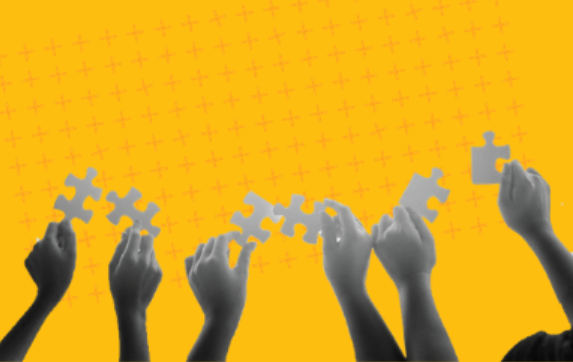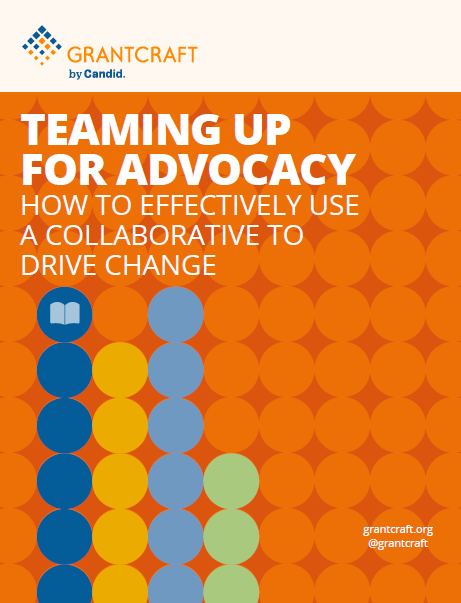Types of Advocacy Collaboratives
Advocacy collaboratives come in different forms, and a foundation’s structure and capabilities might lend itself more easily to some than others. However, foundations that actively participate in advocacy collaboratives may find themselves participating through several different formats. With the Atlantic Philanthropies ending its grantmaking, it offers an excellent example for reflecting on how one foundation has participated in learning networks, strategic alignment networks, and pooled funds to collaboratively pursue advocacy interests.
Learning Networks
A learning network is a group of funders who come together to hear what’s happening in a field or issue area, share information, and explore potential strategies for making more effective investments. In addition to information sharing, collaboratives of this type “allow donors to amplify their voices to show the rest of the funding world that the issues they’re working on are important and, hopefully, increase the number of funders supporting those issues.” Learning networks may also subdivide into working groups to provide like-minded funders with a “safe space” to share information about grantees and the field or bring in speakers to learn together about more specific issues.
Members of learning networks often find opportunities to align some of their grantmaking through shared or complementary strategies, and it’s not uncommon for pooled funds or strategic alignment networks to grow out of learning networks. One pooled fund got started, a grantmaker recalled, when a handful of learning network members decided that “a more unified, collective effort was needed to raise the visibility” of a policy issue after years of trying, “somewhat unsuccessfully, to motivate increased giving by talking one-on-one with colleagues at other foundations.” The pooled fund drew heavily on the “strong relationships and cohesion” that had developed among network members.
The Atlantic Philanthropies actively participated in the Executives' Alliance for Boys and Men of Color, a funder’s learning network associated with My Brother’s Keeper. Read more about this learning network: http://bmafunders.org/alliance
Strategic Alignment Network
A strategic alignment network is made up of funders who share a mission, strategize together, and work in concert to obtain publicity, traction, and impact — but who still do all their grantmaking independently. Some networks of this type create intermediary organizations or other structures to advance a strategy, which then receive support directly from network members. Membership in strategic alignment networks is often selective, with formal governance and contribution requirements.
A grantmaker in a collaborative that aimed to shift both environmental policy and consumer activity recalled that each meeting would end with an informal tally of what should happen next and where grant dollars were needed: “We’d ask everyone where their interests were and what grants they were considering making. Then we knew what was covered and what was still needed.” Later on, he explained, “side conversations” about how to fill the gaps “could happen with less pressure.”
The Atlantic Philanthropies helped anchor the Funders for Alternatives to the Death Penalty, a strategic alignment network active until 2012. Interestingly, several of the members then created a pooled fund, the Themis Donor Collaborative. Read more about this strategic alignment network: http://www.proteusfund.org/themis/about
Pooled Fund
A pooled fund is a “pot” of money toward which funders contribute and from which grant dollars (or program-related investments) are disbursed. Money from the pot is used without distinguishing the original donor. Some collaboratives allow “one funder, one vote,” no matter how much money the funder puts in the pot, while others adjust voting privileges based on the amount contributed.
Belonging to a pooled fund may entail a large commitment of a grantmaker’s time and energy, or it may simply require a financial commitment. In either case, the day-to-day work of the collaborative is often carried out by staff or consultants, with donors serving on steering committees, setting strategy, and making decisions. Pooled funds do many of the same things foundations do: analyze issues or fields to determine the most effective grantmaking strategies, issue requests for proposals, conduct site visits, assess potential grantees, and select grantees. In addition to providing financial resources, many feature capacity-building services, such as training or technical assistance, networking opportunities, peer learning, and help with advocacy or public communications. Grants are sometimes allocated to intermediaries based more locally, which, in turn, regrant to organizations of which they have firsthand knowledge. Local funders may also be asked to match national funders’ contributions in some way.
The Atlantic Philanthropies participated in the National Security and Rights Collaborative, which is still evolving and will continue to move forward even as Atlantic exits the field. Read more about this pooled fund: http://www.proteusfund.org/src/about
Stories From the Real World
Pooled funding isn’t easy. It’s hard to get people to agree on what should be funded, especially if there isn’t a designated staff person to manage it. Aligned funding is easier, I’ve found, because you don’t need as much buy-in or staffing. Also, all foundation staff are accountable to their board of directors so they can work together to find a piece of the puzzle that fits within their own organization.
Our advocacy collaborative’s minimum for donors used to be $100K/year, and those funds are allocated to a pooled fund only. Now it’s $250K. We had one funder who couldn’t do that, and they left. We tried to give them a heads up, but it was a painful decision because the funder was very valuable. We didn’t want to lose this institution, but people felt that relative to the size of the fund the minimum is proportional.
Any funder in a pooled fund wears three hats: their institutions’ priorities; their own priorities; and the collaborative’s priorities. People often get confused as to what hat they’re wearing. I’d be sitting at a collaborative meeting seeing so much of this confusion and conflation going on. Funders need to think about how much they’re willing to surrender their own voice and interests for the sake of the collaborative. They need to think about what the bandwidth is for their own institution to make sure its needs are being met. And they need to think about the degree of risk their foundation is willing to tolerate. Sometimes, funders don’t think about all this, and they end up arguing for things that aren’t even remotely close to what was going to get funded.
A major issue with pooled funds is how decisions get made. Is there one organization, one vote? Or skewing by money? If the first person says “one person, one vote,” it’s hard for someone to challenge that who may be sitting on a pile of money because they don’t want to come across as the heavyweight.
NOW REFLECT:
- What advocacy collaborative model feels most comfortable for you personally? Why?
- What model feels most intuitive for how your foundation structures other partnerships?
- Do any of the models feel “easier” than others? How might the sticking points be simpler?
Please click here for information on GrantCraft’s methodology for this research.


